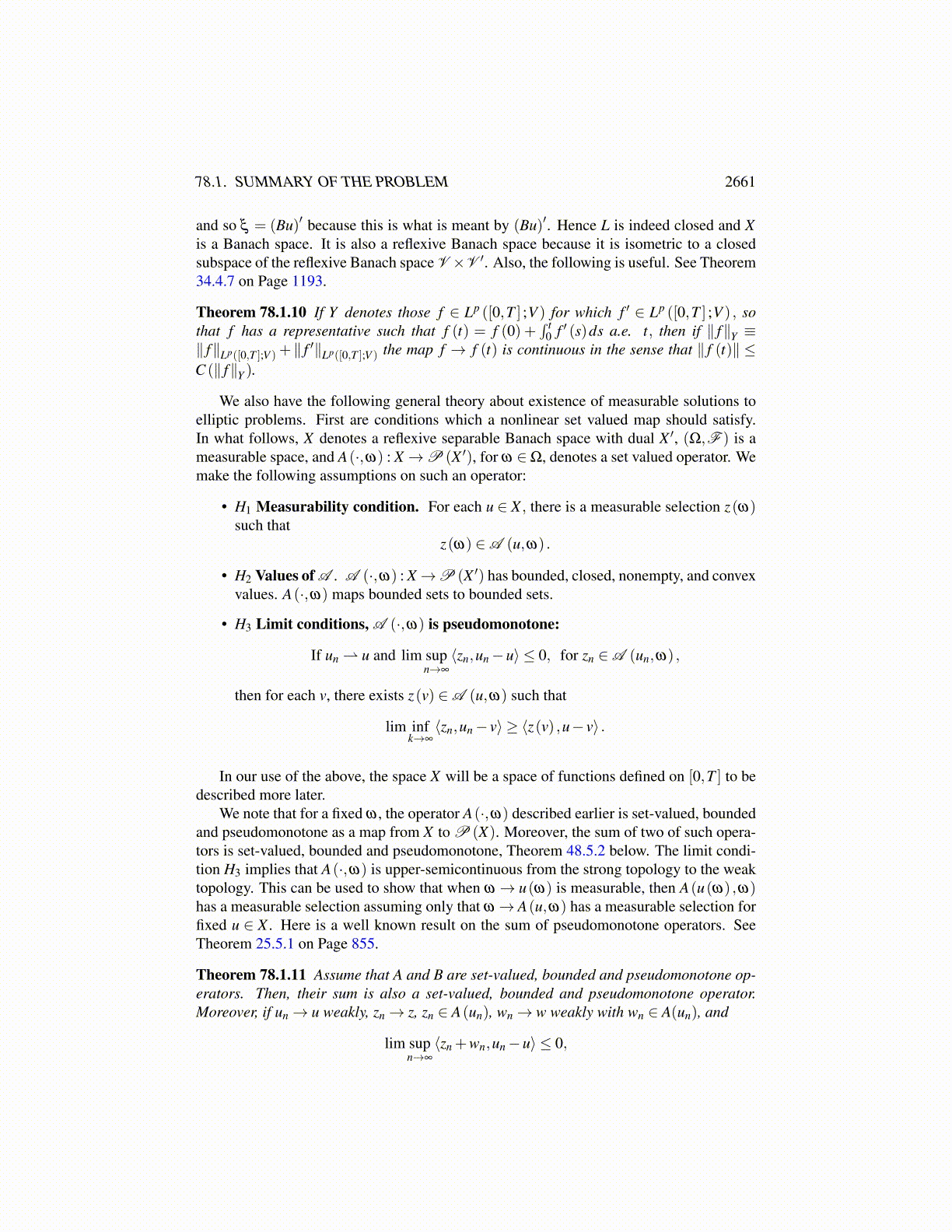
78.1. SUMMARY OF THE PROBLEM 2661
5. sup{||Bu(t)||W ′ , t ∈ [0,T ]} ≤C||u||X for some C > 0.If K : X → X ′ is given by
⟨Ku,v⟩X ′,X ≡∫ T
0⟨Lu(t) ,v(t)⟩dt + ⟨Bu,v⟩(0) ,
then
6. K is linear, continuous and weakly continuous.
7. ⟨Ku,u⟩= 12 [⟨Bu,u⟩(T )+ ⟨Bu,u⟩(0)]+ 1
2∫ T
0 ⟨B′ (t)u(t) ,u(t)⟩dt.
8. If Bu(0) = 0, for u∈ X , there exists un→ u in X such that un (t) is 0 near 0. A similarconclusion could be deduced at T if Bu(T ) = 0.
Fussing with p≥ 2 is necessary only because of the consideration of∫ T
0⟨B′ (t)u(t) ,u(t)⟩dt.
If p < 2, this term might not make sense. The last assertion about approximation makespossible the following corollary.
Corollary 78.1.9 If Bu(0) = 0 for u ∈ X , then ⟨Bu,u⟩(0) = 0. The converse is also true.An analogous result will hold with 0 replaced with T .
Proof: Let un → u in X with un (t) = 0 for all t close enough to 0. For t off a set ofmeasure zero consisting of the union of sets of measure zero corresponding to un and u,
⟨Bun,un⟩(t) = ⟨B(t)un (t) ,un (t)⟩ ,⟨Bu,u⟩(t) = ⟨B(t)u(t) ,u(t)⟩ ,
⟨B(u−un) ,u⟩(t) = ⟨B(t)(u(t)−un (t)) ,u(t)⟩⟨Bun,u−un⟩(t) = ⟨B(t)un (t) ,u(t)−un (t)⟩
Then, considering such t,
⟨B(t)u(t) ,u(t)⟩−⟨B(t)un (t) ,un (t)⟩ = ⟨B(t)(u(t)−un (t)) ,u(t)⟩+⟨B(t)un (t) ,u(t)−un (t)⟩
Hence from Theorem 78.1.8,
|⟨B(t)u(t) ,u(t)⟩−⟨B(t)un (t) ,un (t)⟩| ≤C ||u−un||X (||u||X + ||un||X )
Thus if n is sufficiently large,
|⟨B(t)u(t) ,u(t)⟩−⟨B(t)un (t) ,un (t)⟩|< ε
So let n be fixed and this large and now let tk→ 0 to obtain
⟨B(tk)un (tk) ,un (tk)⟩= 0